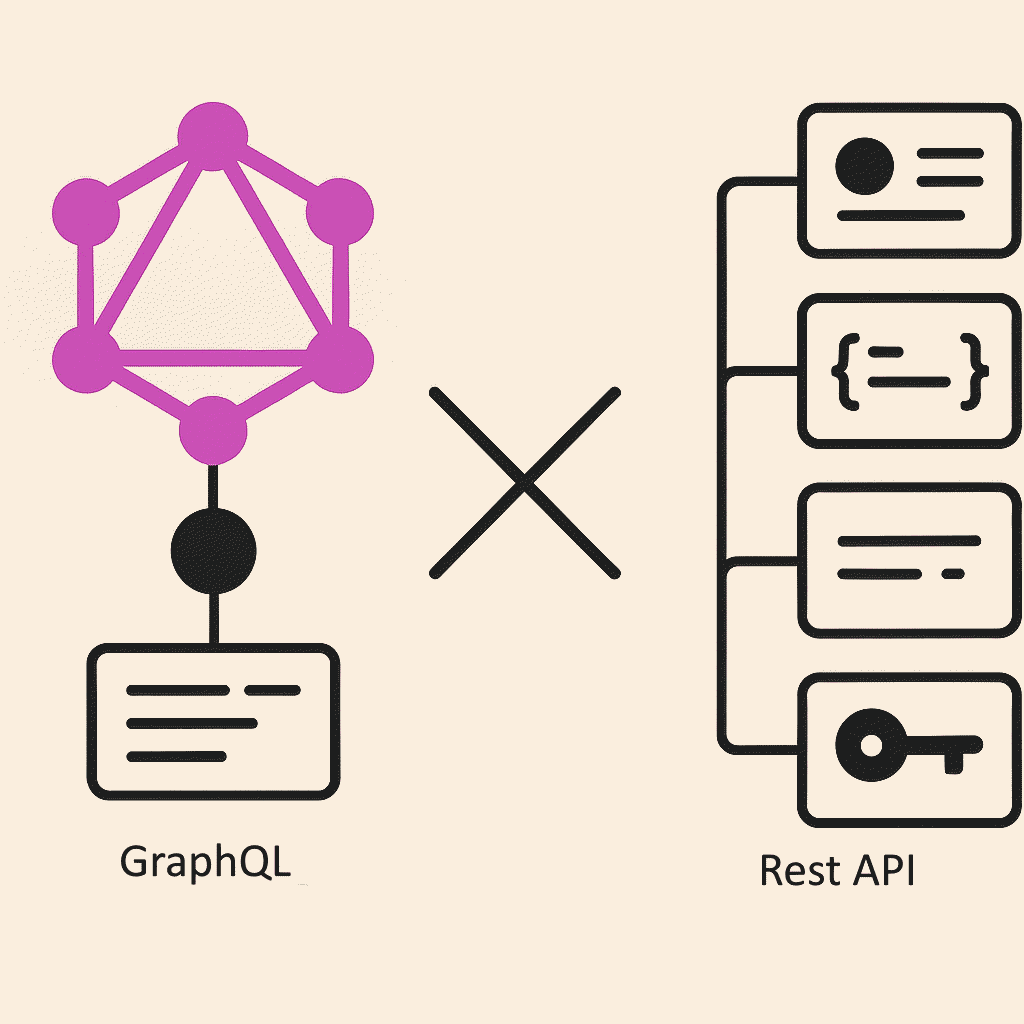
GraphQL vs REST API: When and Why to Use GraphQL
As your application scales in features and users, your API layer can become a bottleneck. GraphQL offers a more flexible, precise, and powerful way to query data compared to the traditional REST API model. But it also comes with challenges. In this article, we'll explore what GraphQL is, when it's a good fit, and how it differs from REST—including best practices around security, performance, and access control.
🔍 What is GraphQL?
GraphQL is a query language for your API and a runtime for executing those queries. It allows clients to ask for exactly the data they need—and nothing more. Unlike REST, which relies on multiple endpoints with fixed response shapes, GraphQL works through a single endpoint and a strongly-typed schema.
🔄 REST vs GraphQL: Key Differences
| Feature | REST | GraphQL |
|---|---|---|
| Structure | Multiple endpoints | Single endpoint |
| Data Fetching | Fixed per endpoint | Flexible via queries |
| Versioning | v1, v2, etc. | Schema evolves without versions |
| Over-fetching | Common | Avoided |
| Under-fetching | Multiple requests needed | Nested querying in one call |
| File Uploads | Native support | Requires workarounds |
| Security | Route/middleware-level | Field-level control possible |
🏗️ GraphQL Schema and Design Best Practices
- Define types clearly: Use strong typing to define inputs, outputs, and nested relationships.
- Use input types for mutations: Group parameters into single input objects to improve readability and validation.
- Separate queries and mutations: Follow the GraphQL standard for read and write operations.
- Use custom scalars and enums: Add semantic meaning to values like `Email`, `DateTime`, or `Status`.
- Paginate large lists: Use `cursor-based pagination` for performance and flexibility.
🔐 Authorization & Data Access Control
With GraphQL, you can implement fine-grained access control directly at the field or resolver level.
- Authentication layer: Use JWT, OAuth2, or session-based auth at the request level.
- Field-level authorization: Protect sensitive fields (e.g.
user.email) based on roles (admin, owner, etc.). - Custom directives: Implement reusable access rules using custom directives like
@auth(requires: "admin"). - Data ownership checks: Validate inside resolvers that the user can access or mutate a resource (e.g. their own posts).
- Rate limiting: Use query complexity scoring or depth limiting to prevent abuse (e.g. DDOS or expensive nested queries).
⚙️ Performance Optimization in GraphQL
- Batching and caching: Use tools like
Dataloaderto batch DB calls and cache results per request. - Persisted queries: Send pre-registered queries from frontend to backend for security and caching efficiency.
- Automatic persisted queries (APQ): Supported by Apollo and Relay to reduce payload size and improve CDN usage.
- Complexity limits: Assign a cost to each field and reject expensive queries dynamically.
📦 Real-World Example
We once built a SaaS dashboard where the frontend needed user info, their recent activity, permissions, and billing status—all in one view. With REST, this required 4 different calls. With GraphQL, the frontend developer wrote a single query:
{
currentUser {
name
activity(limit: 5) {
action
timestamp
}
billing {
plan
renewalDate
}
permissions {
key
allowed
}
}
}
This not only improved frontend performance, but also allowed us to evolve the backend schema without breaking clients.
🚫 When GraphQL May Not Be Ideal
- File uploads and binary streaming: REST handles these cases more cleanly.
- Simple CRUD APIs: REST may be faster to implement and easier to cache via HTTP/CDN.
- Strict cache requirements: REST fits better with HTTP status codes, headers, and intermediaries.
✅ Conclusion
GraphQL is a powerful alternative to REST for modern apps that demand flexibility, dynamic UIs, and reduced over-fetching. But it requires thoughtful schema design, good tooling, and strict security practices. Choose GraphQL when your application's frontend drives the shape of data and backend logic is complex or shared across services.
In architecture, flexibility without discipline is chaos. GraphQL gives you power—use it wisely.

Add your comment